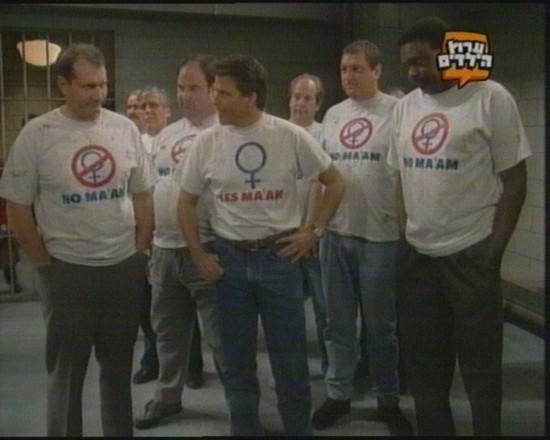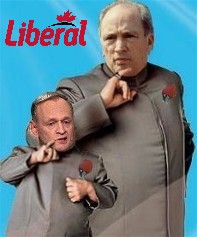1890
I'm going to start in 1890, for one reason. That was the year that the US "frontier" was officially closed. All the land stolen from the native aboriginals by right of conquest had been parceled out to the European immigrants. It is important to understand that this event reflected a COMPLETE change in conditions. We "hit the wall" in terms of available resource pool, and from that moment on the expansionist nature of the country had to change to one of competition for a share of a FINITE resource pool. Up until then, the US had almost open immigration policies and was doing almost everything it could to expand population as fast and as much as it could. In colonial days, it had even been illegal for unmarried persons to live alone, which was about as close as they could really get to legally FORCING people to get married and have kids.
For agrarian people, which was about 98% of the 76 million total population, having more kids, particularly more SONS, meant more hands in the fields in a few years, which meant MORE production, which translated directly into family wealth. Without agricultural machinery, farming was backbreaking-labor intensive. Women did not see being spared this as "oppression" of any form. While women did tend the chickens, the garden, and did all the cooking, the hard manual labor that was farming was mostly done by male muscle and horse or oxen drawn implements.
There was no national economy, everything was regional. Women did often take work in small manufacturing concerns outside the urban areas, particularly BEFORE their family grew to include enough sons to make the family prosperous. Transportation was limited and expensive enough that almost all goods were manufactured and sold on a regional basis.
An interesting side note here - The poorer immigrants, those without even the financial resources or social connections to settle westward where land was still to be had for the asking, worked in the factories and mines of the industrial and urban east. These were the "proles" of the late 19th century. The labor union movement and the women's suffrage movement competed for the attention of the social reformers. Mother Jones, the legendary labor organizer, was very outspoken in her criticism and contempt for the women's suffragists because she viewed them as privileged elites too spoiled to know how good they had it. Blue collar and lower socioeconomic-class women did not even embrace the first wave of feminism: they were too busy fighting to survive.
From 1890 to about 1916 can be characterized as "infrastructure building" - electric plants and distribution systems, roads, bridges, telephone and telegraph systems. In 1890, most of the country was still pretty isolated and, by necessity, self-sufficient. This will become an increasingly important point.
WW I jumpstarts economy
In 1917, the US finally got drawn into the European war when it became apparent that it was inevitable since US ships were being targeted. This was the first of 3 major agrarian to urban displacements which were to culminate in the suburbia of the 1950s, which spawned feminism and number of other social trends. A huge number of farm boys went off to join the army and fight the good fight and came back to the US to settle in the cities. Farmers replaced this lost muscle power of their sons with the new technology of farm equipment, much of it bought on credit, which was to lead to another massive agrarian->urban displacement beginning about a dozen years later when the economy collapsed and banks foreclosed on the mortgages and forced the farmers off their land. The enclosure which began in England about 1500, and was reversed from the mid-1600s to the mid-1900s by Europeans fleeing from the high population densities of Europe to the lower population densities of the US, came to the US in full and major force in the 1930s.
But, I'm getting ahead of myself.
The war jump-started the US industrial machine as it stepped up to producing armaments and other war supplies. War is GREAT for an economy. This particular war was so ideological, spelling as it did the end of the great hereditary ruling elite houses of Europe, that was a great global morality play about the forces of good and evil. Democratic capitalism, US style, won. However, the war left a new ideological enemy firmly entrenched in Europe: the Bolsheviks and COMMUNISM. The US would spend the next 70 years shadow boxing with this bogeyman. This too will become important as we go along.
The victory of the Bolsheviks was bad news for the US labor union movement. Simple self-selection of who had undergone the grueling challenge of immigration had assured that self-reliance and independence were the real US religion. (one of these days I'll have to go into what this country did to the Mormons) ANY form of collectivism was frowned upon, and since many who supported the unions also supported the Red army, and were declared socialists, they were all treated as heretics by worshippers of the religion of US brand industrial capitalism.
This was also very bad news for the blacks, because their first refuge after the civil war had been the industries of the north which, under the grip of true Marx-style capitalists, weren't all that much better than slavery.
Like I said above, nothing like a war to stimulate an industrial economy. Coming out of war with our industry intact, a plentiful workforce which included many returning soldiers, ready markets in Europe, countries anxious to give us their raw materials in exchange for manufactured goods (since they had nothing else to barter), and a host of new war-inspired technologies, in the 1920s the US was on top of the whole damn world. Industrial capitalism was the solution to all the ills of the world. Just give us machines, raw materials, labor, and markets and we were ready to transform the whole damn world.
Floating in a sea of cash, a totally new concept got born: "disposable" income. That would have seemed like a complete oxymoron at any time before in history. Only the hereditary upper, or leisure, classes of Europe could ever conceive of having any significant amount more money than it took to eat and stay warm. Two major new industries were spawned as garbage bins into which urban workers might "dispose" of this unnecessary wealth: luxury consumer goods and entertainment.
Utopianism was real popular. "Labor saving devices" abounded and glowing pictures of the future got painted. Industrial capitalism was going to turn every citizen into an aristocrat. It would take so few hours per week to earn enough to live the life of luxury that EVERYONE would become a "Renaissance Man" (or woman). The arts would flourish, literacy would be universal, people would spend their spare time painting great art, and writing and acting in original plays, and reading and writing great works of philosophy, and yadda, yadda, yadda.
Not everyone shared this utopian vision. Some social critics foresaw a two-tiered world of haves and have-nots, with the have-nots living underground in the bowels of the city working like slaves and the capitalist and bureaucratic living above ground in all this luxury. "Metropolis" is a wonderfully realized silent film portraying this.
Other critics saw people losing their humanity - becoming interchangeable like the parts of the machines they spent their days operating. Charlie Chaplin was so biting and perceptive in his satire, such as that of "Modern Times" that he made MANY enemies and would find himself exiled from the US 25 years later for "un-American activities" and "communist sympathizing."
Aldous Huxley wrote the first dystopian novel of the modern era: "Brave New World" showing that all-consuming consumption might lead to a world where sex and reproduction were completely separated, children were reared in state-run facilities, and the population routinely narcotized itself. People laughed him off saying he was preaching gloom and doom. They were just having so much FUN.
But there was trouble brewing in paradise. Money was so plentiful that in a country long conditioned to subsistence level living, making do, making things last as long as they could be made to last, and doing without things they didn't need, once men reached a level of comfort just slightly above where they were used to living they ceased being motivated to work as hard.
Enter - Andy Consumer!
Andy was the composite everyman profile which the new science/business of advertising used to predict and shape the buying habits of the nation. And Andy had a WIFE, Mrs. Consumer! So, while Andy was away at the factory, advertisers waged psychological war on Mrs. Consumer to make her dissatisfied with her life as it was and make her yearn for more consumer goods which were the guaranteed key to happiness. When Andy got home from a hard day at the factory, Mrs. Consumer was just FULL of newly planted ideas on how they (she) could spend his money and JUST COULDN'T WAIT to tell him about them. And, of course, Andy wanted to make the "little woman" happy so, of course, he'd be just HAPPY to work those extra hours to buy her all those goodies she wanted.
And here is where the first of the seeds of the great feminist explosion of the 1960s and beyond were planted. Up until this time, life had been a full time occupation requiring the dedicated effort of BOTH partners. That was life. People washed their own clothes, cut their own hair, and were very much generalists in the occupation of life. Only among the affluent urban elite did women have the luxury of ruminating on their oppression and lack of rights. Agrarian women, and men for that matter, often lived so far from polling places that suffrage for either sex was a non-issue. But women did get suffrage in 1920. During the 1920s, the flagship feminist issues of the 1960s were in full evidence: sexual freedom for women, birth control, and greater freedom from social restrictions on their behavior.
The Depression
The party lasted exactly 10 years. Speculation, over-extension, and the lack of expected growth in overseas markets once essential reconstruction of Europe was done, stalled the US economy and in 1929 over half the "wealth" in the country went "poof" almost overnight. The next 10 years were to be grim indeed. Capital dried up, banks failed and closed, unemployment reached 25%, millions of farmers couldn't make the payments on their farm equipment when their markets failed, the banks foreclosed and they were forced off the land into the cities to swell the already long bread lines. People became afraid of their own family ties as destitute relatives showed up at their door with no where else to go.
Here were the second, third, and fourth of the major social forces which would go into creating the 1950s and the explosive rejection of them of the 1960s and feminism: 2) massive geographic displacement toward the urban centers. 3) massive disruption in family and kinship ties 4) a pathological fear of failure and poverty which would later be mistaken for obsession with money and success.
And the fifth major force, which would later develop a symbiotic and incestuous relationship with the first, luxury consumerism, mass media was born. The generally miserable life conditions of most people made them crave escape to a better world. For a nickel they could escape for two hours into a perfect world where their every fantasy was fulfilled. Cinema in the 1930s was nothing but "Lifestyles of the Rich and Famous". The more UNLIKE the reality of their everyday lives, the better, so glamorous actors and actresses populated the silver screen, their fantasies and their dreams.
People had not lost touch with reality, yet. They still knew the difference between what they saw in the theater and the lives they lived outside it. The blurring of the distinction would come 20 years later when television invaded every home and sold them a lifestyle which it told them they COULD afford, if they worked hard enough. Movies had been popular enough during the 20s with the urban crowd, but the addition of sound in the 30s, and the desperate need for escapism, combined to make them a national social phenomenon. And this phenomenon would become the 6th major force which went into the social fragmentation which would be the legacy of the 1950s and beyond: mass culture.
Mass media spelled the end of true regional culture, and began a force of homogenization and conformity that would become crushing in the 1950s, provoke a reaction in the 1960s, and turn into a gender war by the 1990s.
One particular aspect of cinema which was one of those simple cases of happenstance being revised into malice was the use of cosmetics. Most of the early cinema actors and technicians had begun their careers on the theatrical stage. Heavy stage makeup had been necessary for the players to have faces at all under the harsh lighting necessary for theater. Classic theater, such as Shakespeare had actually developed a set of conventions which associated characters with a particular set and configuration of facial features. Any production of "Othello", for example, staged by people with classic theater training, will use a standard set of makeup elements for the title character.
Other conventions were soon established. How many vampire movies have you seen where the vampire is played in ANY WAY OTHER THAN the way Bella Lugosi played Dracula? Or when was the last time anyone played the Frankenstein monster other than the way that Boris Karloff played it?
Women in particular seemed to have a desire to emulate the "sirens of the silver screen", so there were thousands of Betty-Davis-Vamp clones to be seen. I think there is a very significant issue to be explored here that has to do with identity formation and explains the rapid spread and adoption of feminism. Kate Fillion, Deborah Tannen, Katie Roiphe, and others have all observed female identity formation and socialization characteristics which lead women to want to be alike. Cliques of girls will all dress similarly.
I contend that Naomi Wolfe's "Beauty Myth" could not have possibly been more wrong. Without the abdication of responsibility, absolute denial of the role of women's choice, and the demonstrated market appeal of "HE MADE ME DO IT" victimism, it becomes obvious that women, seeking to emulate and identify with the women on the screen, and coveting the sexual power they had to capture the attention of equally unreal men, cast themselves in those roles and replaced their real lives with playing out the scripts to those movies.
Since you seem to feel the need to make sure that men get equal blame, I think the effect on men started later but is no less significant. I can't count the number of young Marlon Brando or James Dean slouch-and-sulk-alikes that were around during the 50s and 60s.
But, just to give men a break, what attributes did those leading men of the 30s and 40s have, WITHOUT EXCEPTION? Answer: money, financial success, charm, and charisma.
My contention is that in the 30 year period between 1930 and 1960, that mass culture replaced real life and created a totally unrealistic set of expectation among BOTH MEN AND WOMEN regarding the lifestyle they were going to lead and the type of mate they were going to attract. And that during that period that marriage was completely redefined in a way that made it impossible to work in the majority of instances.
People did not make movies about boring stuff - they made movies that played on people's emotions. Romance and action, sex and violence, and the trappings thereof, are the staples of mass media entertainment. And since everyone sees the same things, they compare their lives to what they see and are vaguely dissatisfied. Into this void, consumer capitalism pours endless offers of instant solutions and magic pills. Forty or fifty years before, the "average" man might have seen a couple of hundred women in his lifetime, and the "average" woman about the same. Love was something that was expected to develop over time as people learned to trust and depend on each other. A farmer choosing a wife would look at her hands and ask whether she could milk a cow. A woman would look at how industrious he was, whether he was prone to drunkenness and fits of anger, and was he kind. That was how people chose mates.
I DO think that there has been a change in sexual behavior which will result in social catastrophe, but 60 years ago, not recently. And, as I have been verbose as hell in developing, that it was far from the only force. In addition to the 6 already mentioned, there is one more: the development and rise of "Big Government." None of the escapism of the cinema would have seemed so attractive had not so many peoples day to day lives been so oppressive in reality.
"Capitalism has failed us, socialism is the answer" came the cry. I won't go into all the ideological wars that got fought, but in the end the country opted for a great father figure and a modified hybrid of socialism and capitalism based on some new economic theories. One could call this "pump-primed" capitalism because it was dependent on government spending and taxes to make it work. The individual income tax, which was instituted at this time, provided the vehicle to extract capital from the pockets of individual wage earners which would never be returned to them. Government spending slowly dragged the economy upward, but it took another war to jump-start it again.
While the US was obsessed with first its success, then its own problems, the bitter drubbing that Germany had taken during the first world war, and the excessively punitive and humiliating conditions imposed on the German people for the mistakes of their leaders had been festering. A charismatic madman preached the gospel of regaining their national pride, and THEY LISTENED. There was also a petty tyrant in a funny hat over in southeast Asia dreaming dreams of world domination.
War too
Once again, the country had a common cause, a reason to sacrifice, and a tangible goal beyond their next meal. The industrial machine kicked back into high gear. There was one madman running loose in Europe who really did personify evil, and one in the south Pacific who was nearly as bad. Once again, American boys signed on to fight the good fight. This was the last time the US would experience any sense of unity.
In one very real respect, WW II created the real beginning to the end of racism. I'm not going to get into an argument about how much residual racism there is, a hell of a lot of what we see here now is opportunistic victimism. I live in a completely integrated middle-middle-class neighborhood where people are not necessarily colorBLIND as much as they are colorINDIFFERENT. We still see each other as black and white, it just isn't significant. We're all just people. If only we could manage the same thing with feminist sexism.
Anyway, WW II was the most equal opportunity war to date. Both black and white GIs came back owing their very lives to members of the other's race. Some of them raised kids who marched together for civil rights 20 year later. It was the beginning of the end of complete acceptance of apartheid in the US.
Once again, the US rode in on their white horses wearing their white hats. WE were the heroes. WE won the war. OUR industrial technology. OUR determination and self-sacrifice. Industrial capitalism was VINDICATED. It WAS the WAY TO SALVATION.
While the war had caused us to make strange bedfellows with Stalin, as soon as it was over we could go back to him being our ideological nemesis. If there was one thing the war taught us, it was that we were more prosperous while there was a war going on than while there wasn't, so we contrived to be in, or on the verge of, war for the next 40 years. With Hitler dead and Hirohito history, the "bad guy" seat was open, so we put Stalin in it. While we weren't at war with him TODAY, we might have to do so on any given day, so we stayed at a state of "readiness."
The 1950s
By the early 1950s, were chasing commies all over the globe, and even here in our own country. We became the UN's junkyard dog, and went charging in wherever we thought any of those "dirty commies" might be hiding. Even though Eisenhower was a military man himself, he saw how the military industry had attached itself to the teat of tax dollars and was growing quite fat. He warned us about the "military-industrial complex" and was instrumental in establishing NASA as a civilian agency and preventing the militarization of space.
But wartime paranoia persisted and spooks were everywhere. The most crushing conformity requirements since the inquisition descended on the country. An accusation of "communist sympathizer" could ruin a career then, just like an accusation of "Sexual Harasser" can today. Spies were found, tried and executed.
The war produced the third major displacement and social fracturing of the century, and by far the largest, as well as setting the demographic trend that would dominate the rest of the century: suburbanization. Anxious to reward the survivors who had risked life and limb defending "freedom and the American way", the country provided them education, jobs, and low cost home loans. They just wanted those boys to be real happy, so they would see that it had been worth the risk of being blown to bits.
Where during the war there had been a labor shortage, technology, both industrial and agricultural, had boosted productivity so much that there was now an incredible labor surplus. Women who had been a mainstay of wartime industrial production were shooed out of the factories to make room for hubby and told to go home to make that new house he'd bought her comfy for him when he got home all tired from a hard day of work.
Of course, to make her life easy and pleasant and palatable, hubby would spend some of those wages on labor saving devices to make her life so much easier and drudgery-free than her grandmothers. Besides, it provided a ready market for all those washing machines and clothes dryers and other consumer products that those converted wartime factories were churning out.
Ah, life was sweet. With less than 2% of the population, the US consumed over 50% of its industrial output and nearly 95% of its energy. Of course, the "little woman" and the kids didn't have much to do except sit around and wait for dad to come home so they could make him happy, which was pretty difficult because deep down inside he hated the repetitive and boring work he did for 8 hours per day.
In less than 40 years, the life of the "average" American male had narrowed from a variety of skills and activities, every one of which was directly related to his life and survival, to doing essentially the same repetitive and meaningless thing 8 hours per day.
Men went crazy.
Suburbia in the 1950s was a fertile breeding ground for pathology. "Business" was conducted over the "3 martini lunch", and a 4th was just the thing he needed as soon as he walked in the door to unwind from a "hard day at the office." His wife, having spent her day devoid of any mental stimulation whatsoever and anxiously anticipating his return home, would pounce on him the moment he walked in the door with what were to her the most significant events of her day and were to him monstrously trivial. We have your basic "conflict of interest" brewing here.
Alcoholism was rampant, as was a deep and confusing cognitive dissonance. All this stuff that was supposed to make him happy, and he wasn't happy. Every night he would collapse into his "easy chair" and watch as television told him more things he could buy, any one of which would make him happy, therefor in the aggregate they should make him VERY happy.
All day his wife had watched the same boob tube, but with a brand of brain-pablum specifically tailored to her tastes and emotional preferences. The term "soap-opera" was coined to describe those cheezy contrived dramas that gave her a surrogate life and were supported by advertisements for household cleaning and laundry products, which everyone knew were a woman's primary concern because she wanted to continue to make hubby extremely happy so he would keep working to buy the stuff that made her happy. At least that's the gark that the television spewed into her brain every day.
This is the view of the world that Betty Friedan saw. And from this came...
"The Feminine Mystique".
(From the cover notes on a early copy of "The Feminine Mystique") -
"Today American women are awakening to the fact that they have been sold into virtual slavery by a lie invented and marketed by men." (emphasis added)
Friedan was fond of hyperbole and was very adept at using and twisting language. She likened the suburban housewives' boredom and lack of meaning in their daily lives to the Nazi Holocaust against the Jews. (Interesting now that some contemporary feminists are claiming that women suffered worse deaths than men did in the Holocaust. Women's sensitivity, and the greater power, depth, and significance of women's feelings has become well established in the cultural zeitgeist.) Also worthy of note was the fact that a disproportionate number of early feminists were Jewish. There is a cultural stereotype called the Jewish American Princess, JAP, of which Monica Lewinsky is a perfect example. Phillip Roth also wrote about this type in "Goodbye Columbus." Boredom and thrill seeking are indeed the bane of the JAP. As are kvetching, complaining, and making extreme statements simply for effect.
Friedan's work set both the form and tone of the feminist argument - "women... sold into virtual slavery... by men." Women were the victims of men. Women's own choices had nothing to do with it. Women had no free will. Men forced women to do everything that woman did, and women hated it.
The complete poverty and aridity of feminist thought is best illustrated in how, over the next 28 years, men selling women into slavery got escalated to men waging war on women. Susan Faludi took Friedan's well-worn plot, dusted it off, added updated statistics, and sold the same tired old nonsense as "Backlash: The Undeclared War Against American Women."
For some unknown reason, what neither Friedan nor Faludi, nor thousands of women writers who came between and very profitably mined the tired old theme of women as victims of men, were able to see, or willing to admit, was that men and women were EQUALLY trapped in a world not of their own making and struggling to do the best they could under the circumstances. Faludi was right in one respect: between the early 1960s and early 1990s, relationships between men and women had deteriorated significantly and were characterized by a far greater degree of animosity than they had been 30 years earlier.
However, there have been a few women writers who viewed the war differently. Robin Blumner, writing in the St. Petersburg (FL) Times, puts it this way:
"What this comes down to is a group of militant feminists who have declared war on men and their sexual desires."
Erin Pizzey, founder of the first battered women's shelter in the UK, says:
"Men, realizing that they had been cast in the role of sexual monsters, retaliated."
Instead of the two vast and homogenious sexual armies portrayed by Friedan and Faludi, there are at least five separate and ideologically distinct groups lobbying to make their particular point of view into the majority view and have it reflected in public policy. For lack of any better terms, I'm going to call these 5 groups: the modified traditionalists, male and female, the progressives, male and female, and the heterophobic separatist extremists.
What women in general seemed absolutely unwilling to acknowledge was that in declaring war on men and their sexual desires, these militant feminists were also declaring war indirectly on the majority of women. And, most bewilderingly, they seemed to be enthusiastically joined and abetted by the majority of women who didn't seem to realize that they were participating in a war on themselves.
Men were completely unprepared for the bitter hatred toward them that boiled out of the women's movement. Furthermore, the behavior of women seemed absolutely schizophrenic. In her book on man-hating, "My Enemy, My Love", Judith Levine perfectly summed up this two-faced visage of women in the title of one of the sections: "private love, public hatred."
The message that men got from women was that we had a terrible debt to pay off, and that women intended to make us pay, and pay, and pay, and pay some more.
As Wendy Dennis observed, nothing was more indicative of the contradictions of this mentality than the woman who would bitterly and loudly complain about every aspect of men, then morosely wonder why she couldn't get one of these awful creatures to fall madly in love with her. Men would observe such women and the paradoxes in their behavior which they seemed incapable of either seeing or understanding and draw the conclusion that women were none too bright, dishonest to the core, and essentially selfish and exploitive.
Added to this was the frequently discussed notion that women were going to demand EVEN MORE of men.
So men indeed begin to retaliate. the two assets that men had and could withhold until they got what they wanted were the last two things that women seemed to want or need from men: money and committment. As the legal situation swung more and more against men, they became increasingly resistant to voluntarily submitting themselves to marriage.
The loss of family and social networks caused by the major displacements and social fracturing of the two world wars and the Depression, had two devastating results on the stability of marriage. The first was to destroy the oral tradition of transmission of cultural and life knowledge parent to child, or more accurately elder to younger. The destruction of the connection to multi-generational family and community networks deprived people of access to a vast storehouse of practical knowledge in the day to day conduct of their lives. As always, commercial capitalism stood by ready to profit from their loss.
The process that would eventually result in the mountains of garbage which were foisted on a confused and uncertain public in the form of "self-help" books which appeared by the millions during the 70s and beyond, began in full force with the work of Dr. Benjamin Spock. This P.T. Barnum of child development hawked himself as the ultimate expert on raising children. He was certainly not the first, child rearing how-to advice is almost as old as writing itself, but he was the first to achieve true mass acceptance in the newly developing phenomenon of mass culture.
He was also the first to fully exploit another emerging phenomenon of consumer capitalism: brand labeling, recognition, and franchising. Dr. Spock books became a brand by themselves, and his name itself began to have value. While his intentions were probably good, or at least benign, Spock established two trends, or cultural notions, which would eventually come to be applied in broad scale social engineering: 1) the art of child rearing could be reduced to a set of instructions much like a recipe, and 2) there were experts who understood how to raise children much better than the collective wisdom of thousands of generations of parents.
The first of these notions would eventually be applied in a wholesale restructuring of the education system in an attempt to implement the misguided notion that kids could be conditioned out of sexual differences. When the child failed respond to this re-structuring of personality in the desired manner, the failure was seen as lying in the child not in the theories which were being applied.
But, the far more destructive effect was to produce a reliance and faith in "expertise" which encouraged people to substitute the judgement of these "experts" for their own, and allowed the production glut of self-help books which put forth preposterous notions which were nothing more than personal biases represented as cultural panaceas.
The second devastating effect on the stability of marriage caused by displacement and social fracturing was to make make mating and mate selection an essentially capitalistic, or marketplace, process. There was a subtle but distinct shift from mate selection based on "who will make a good life partner" to "who will give the most and best of what I want?"
An odd sort of selection process began to take over the mating game. The regional and community based life which was characteristic before the urban and suburban migrations had been filled with social structures which would introduce unmarried people to potential mates. Extended family and social network matchmakers would either exploit existing opportunities or contrive ones to bring them together. Since there were always many other people involved, they always got to know each other socially before coutrship ever entered the picture. And if it did, there were be protocols to be followed. Mate selection was complex and often had as much to do with family as it did with the indivual. The character of other members of someone's family was most times an excellent predictor of his or her behavior.
Deprived of social networks which allowed low pressure low risk getting to know, an ever increasing level of aggression on the part of men was required. The general level of hostility that women projected toward men simply amplified this effect. The most aggressive men with the most bulletproof hides were the only men who put themselves in women's faces. And, not surprisingly, the women these men singled out to approach were the ones advertising their availability and interest in the most outrageous manner. As women became more entrenched in their passivive attractive strategy, all but the most aggressive men became invisible to them.
This both put an incredible burden on women who now bore the sole responsibility for finding herself a mate, but it also distorted the way they viewed the various aspects of themselves and their personalities. The female view of this is Naomi Wolfe's "Beauty Myth. The male view of this is epitomized by trying to tell a woman about what you find attractive and having her argue with you and tell you that you are wrong, then proceed to tell you what you think and what MEN find attractive.
By the early 1990s, the percentage of the adult population which was married was declining every year as divorce ripped through the boomer generation and the effects of that disproportionately large segment of the population more than offset the rate of marriage of the twenty-somethings.
----------------------------------------
As women became integrated into the workforce, they began to take on the characterisitics which men had years earlier which had made them less than pleasant spouses. These coping strategies with the stresses of careers did not mix well with developing the intimacy and cooperation necessary to create a successful partnership.
Back to Gender War, Sexuality, and Love
Search This Blog
The Jiggly Room
Polk High
The Encyclopedia Marxofeminist

Feminist "Equality" Includes The Loss of Free Speech
Sheeple Fighting Back!
- Black Sheep - You Tube (2min)
- Symantec (SYMC - NASDAQ) Downgraded to "Sell"
- Problems With Norton Internet Security?
- Cypress CEO Responds to Nun's Urging a "Politically Correct" Board Make-Up
- Do You Believe Women Have the Right to Free Speech?
- Canadian Feminists Getting Worried?
- Seven Ways To Get Traffic Without Google
Not All Women Are Like That! (NAWALT)
Myths, Legends & Religions

You are not god. Learn to observe without judging.

- Cypress CEO Responds to Nun's Urging a 'Politically Correct' Board Make-up
- The Baby Bomb: How the Boomers were Used to Demolish a Culture
- Statement of Bill Wood to the Committee on Ways and Means
- Why Did Feminists Attack the Family? -- by Heretical Sex
- Political Correctness - The Revenge of Marxism -- by Baron Bodissey
- Are Americans Practicing Communism? (The Ten Planks of the Communist Manifesto)
"We can't expect the American People to jump from Capitalism to Communism, but we can assist their elected leaders in giving them small doses of Socialism, until they awaken one day to find that they have Communism." -- Nikita Krushchev

THE ANIMAL FARM REALITY OF "FEMINIST EQUALITY:"
"Differences [between men and women], including the products of social inequality, MAKE UNEQUAL TREATMENT NOT UNEQUAL AT ALL." -- Catharine MacKinnon, "Reflections on Sex Equality Under Law," Yale Law Journal, 1991
Blog Archive
-
▼
2005
(86)
-
▼
March
(44)
- EOTM: Feminism in the Context of U.S. Social Histo...
- EOTM: The Nightmare of Feminism
- EOTM: The Ultimate Hypocrisy: An Alleged Movement ...
- EOTM: False Premises, False Promises
- EOTM: Feminism Deconstructed - A Vast Social "De-C...
- EOTM: Hate Bounces
- EOTM: Turning Away From Women: Bicycles Without Fish
- EOTM: An Open Letter to Women
- EOTM: Men, Are You Sick of It?
- EOTM: The Feralization of Culture - Building Bette...
- EOTM: Radical Notions
- EOTM: Man Hating and Man Bashing
- EOTM: THE BITCH
- EOTM: !!!!!!!!!!RAPE!!!!!!!!!!...
- EOTM: Presenting Feminism! A Coming OUT
- EOTM: Masculism, Not Me-Too-ism
- EOTM: Fair Fighting
- EOTM: Sexual Harassment
- EOTM: The Pearl Harbor of the Gender War: Rape and...
- EOTM: The Chain of Violence
- EOTM: Why Are Men So Angry?
- EOTM: Boycott VD (Valentine's Day)
- EOTM: Boycott the Bashers
- EOTM: "Can't We All Just Get Along?" "Can't We Jus...
- EOTM: Double-THINK, double, triple, and quadruple ...
- EOTM: The Rocky Road to True Equality
- EOTM: The Lies: Domestic Violence
- EOTM: The Lies: Propaganda Used to Demonize a Non-...
- EOTM: Road Trip '97
- EOTM: There Ain't No Way Out But Out
- EOTM: Equal Time - Tales of Offensive and Obnoxiou...
- EOTM: How It All Fell Apart
- EOTM: Confronting Matriarchy
- EOTM: Surviving a Culture of Singleness: Choosing ...
- EOTM: Hard Analysis
- Feminism Deconstructed: Nothing but a Hate Movement
- EOTM: In a Male Voice
- EOTM: The Nature of Things
- EOTM: A Simple, Brief, Rationalist Alternative to ...
- EOTM: The Secret of Life: Shut Up and Shovel the F...
- EOTM: Life
- EOTM: The Warning Label: 90 degrees from everywher...
- EOTM: Gender War, Sexuality, and Love - Overview
- EOTM: Gender War, Sexuality, and Love
-
▼
March
(44)

"Only an armed people can be the real bulwark of popular liberty." -- V.I. Lenin
Repeal the Canadian Gun Registry

"A system of licensing and registration is the perfect device to deny gun ownership to the bourgeoisie." -- V.I. Lenin
"We shall destroy you from within!" -- Nikita Krushchev, during the Kitchen Debate, 1959
"Self Made Man" - Sculpture by Bobbie Carlyle
Websites
The Demographic Trap

"Destroy the family, you destroy the country." -- V.I. Lenin
"America is like a healthy body and its resistance is threefold: its patriotism, its morality, and its spiritual life. If we can undermine these three areas, America will collapse from within." -- Josef Stalin
Back to the Bible
A Non-Bible Thumper Point of View
"The aim of socialism is not only to abolish the present division of mankind into smaller states and all-national isolation, not only to bring the nations closer to each other, but also to merge them." -- V.I. Lenin
No Thanks - We'd Rather Be Canadian!
Man-Made Global Warming is a Hoax being used to bring about Global Communism (Globalization)

"Every collectivist revolution rides in on a Trojan horse of 'emergency'. It was the tactic of Lenin, Hitler, and Mussolini. In the collectivist sweep over a dozen minor countries of Europe, it was the cry of men striving to get on horseback. And 'emergency' became the justification of the subsequent steps. This technique of creating emergency is the greatest achievement that demagoguery attains." -- Herbert Hoover
Beware the Cultural Marxism of Environmentalists
"The threat of environmental crisis will be the 'international disaster key' that will unlock the New World Order." -- Mikhail Gorbachev, quoted in "A Special Report: The Wildlands Project Unleashes Its War On Mankind", by Marilyn Brannan, Associate Editor, Monetary & Economic Review, 1996, p. 5

ABOLISH THE UNITED NATIONS
The Marxism of Multi-Culturalism

"Tolerance is how far a mechanical part can deviate from the norm before it screws up the entire machine." -- Any Mechanic
The Grinch That Steals Children's Souls

"Give us the child for 8 years and it will be Bolshevik forever." -- V.I. Lenin
"We must declare openly what is concealed, namely, the political function of the school...It is to construct communist society." -- V.I. Lenin
Extra, Extra!



"The oppressed are allowed once every few years to decide which particular representatives of the oppressing class are to represent them." -- Karl Marx
The Liberal Party of Canada = Cultural Marxist Agenda
- The Real Pierre Trudeau: Father of Canada's Permissive Society -- by Steve Jalsevac
- Pierre Elliot Trudeau - Cultural Marxist Wrapped In a Canadian Flag
- The Multi-Tasking Pink Proletariat
- The Right Dishonourable Paul Martin Wants Canadians to "Give Up A Little Of Our Sovereignty To Make The World Work." -- YouTube 2:38 (Maybe We Should Lock Him Up To Make Canada Work!)
Congratulations, Karl Marx!

Marxism Links (For Researching)

- A Brief Overview of Marxism: "Communist (Community) Oriented Policing" - by Phil Worts
- Antonio Gramsci - Collected Works, including the Prison Notebooks
- Antonio Gramsci's Life & His Marxist Theories Explained
- Communist Manifesto - by Karl Marx & Frederick Engels
- Herbert Marcuse Official Homepage
- Herbert Marcuse, Haters of
- Marxists Internet Archive
- The Conflict Tradition
- Women and Marxism
Rule by Science

Philosophy Corner

“Dialectical thought is related to vulgar thinking in the same way that a motion picture is related to a still photograph. The motion picture does not outlaw the still photograph but combines a series of them according to the laws of motion.” -- Leon Trotsky
Dialectical Thought is a Cornerstone of Marxism, and Feminism (Because They Are One In the Same)
The Marxist Dialectic's Zig-Zag

Wishing to advance in a room full of people, I do not walk through the aisle and straight toward my goal. Nor do I move slowly through the crowd shaking hands with friends and acquaintences, discussing points of interest, gradually nearing the objective. The dialectical pathway is different. It consists of a resolute forward advance followed by an abrubt turn and retreat. Having retreated a distance there is another turn and advance. Through a series of forwardbackward steps the goal is approached. To advance thus is to advance dialectically. The Communist goal is fixed and changeless, but their direction of advance reverses itself from time to time. They approach their goal by going directly away from it a considerable portion of the time. Lenin wrote the textbook, One Step Forward, Two Steps Back. Chinese Communist schoolchildren are taught to do the dialectical march taking three steps forward and two steps back. If we judge where the Communists are going by the direction in which they are moving we will obviously be deceived -- Dr. Fred Schwarz, President of Christian Anti-Communism Crusade
Critical Theory

All's Fair In Love and War


The Matriarchy Lives! (Click Picture)

"I am most anxious to enlist everyone who can speak or write to join in checking this mad, wicked folly of 'Women's Rights', with all its attendant horrors, on which her poor feeble sex is bent, forgetting every sense of womanly feelings and propriety. Feminists ought to get a good whipping. Were woman to 'unsex' themselves by claiming equality with men, they would become the most hateful, heathen and disgusting of beings, and would surely perish without male protection." -- Queen Victoria, 1870


Please Give Manginas the Respect They Deserve: NONE!

























